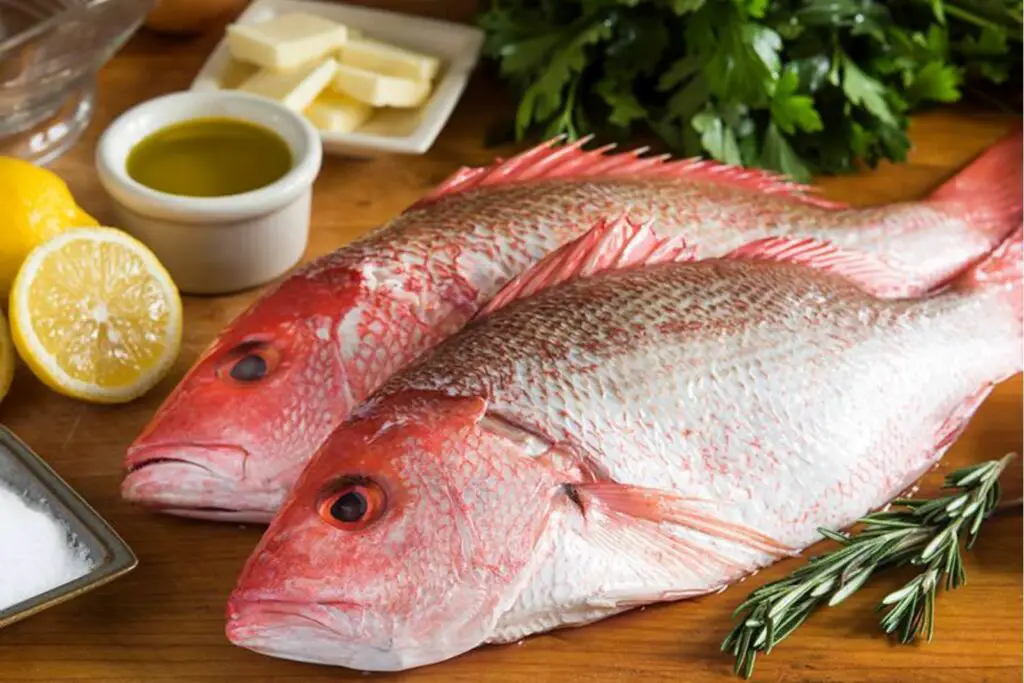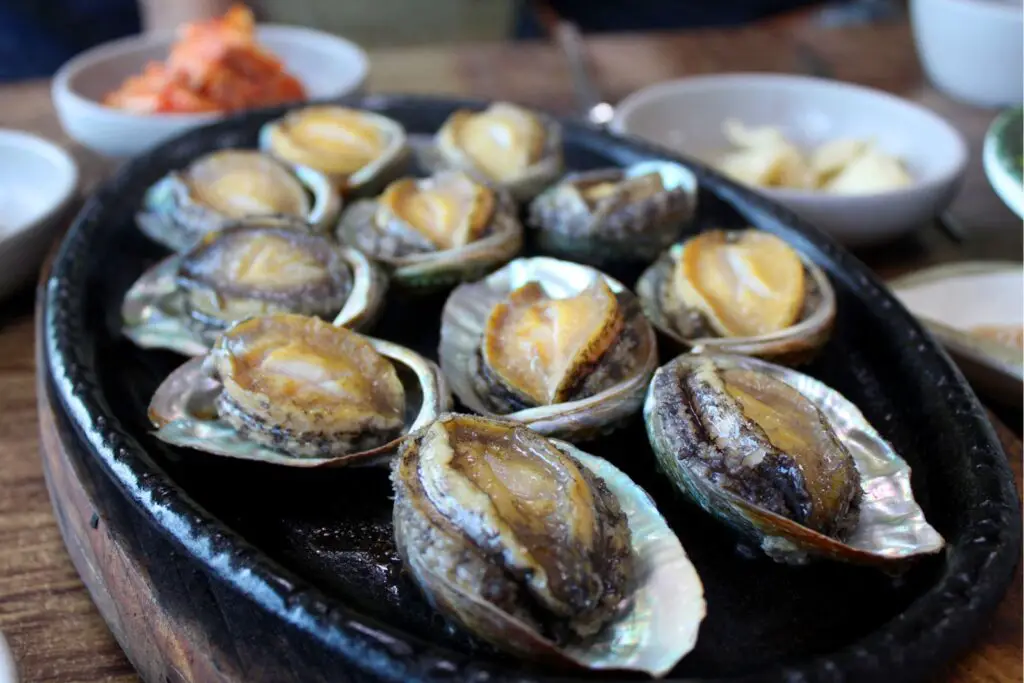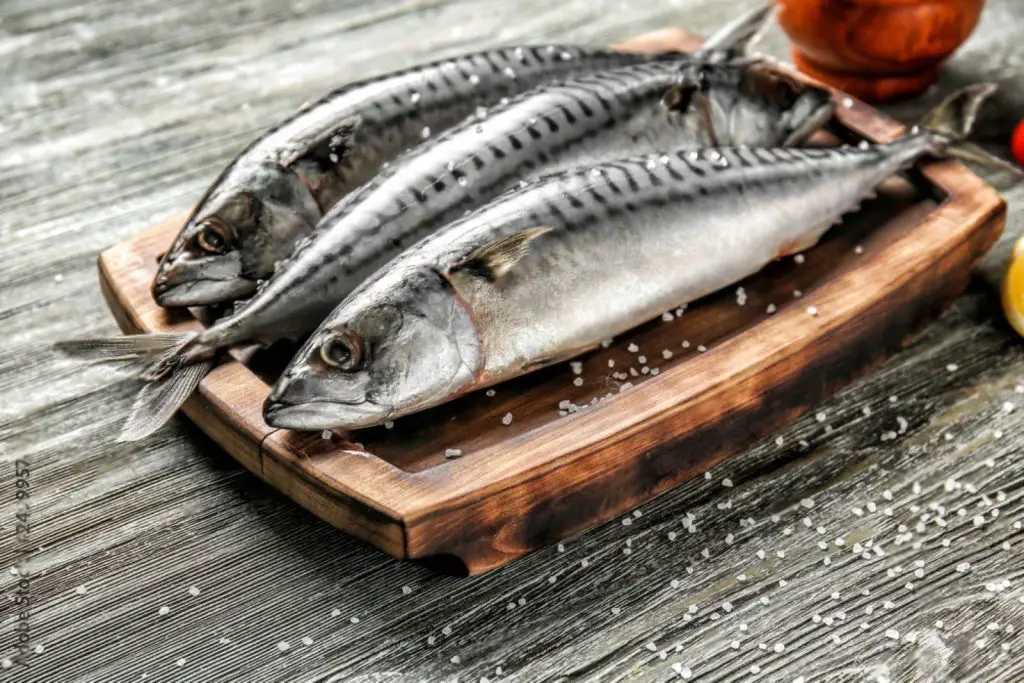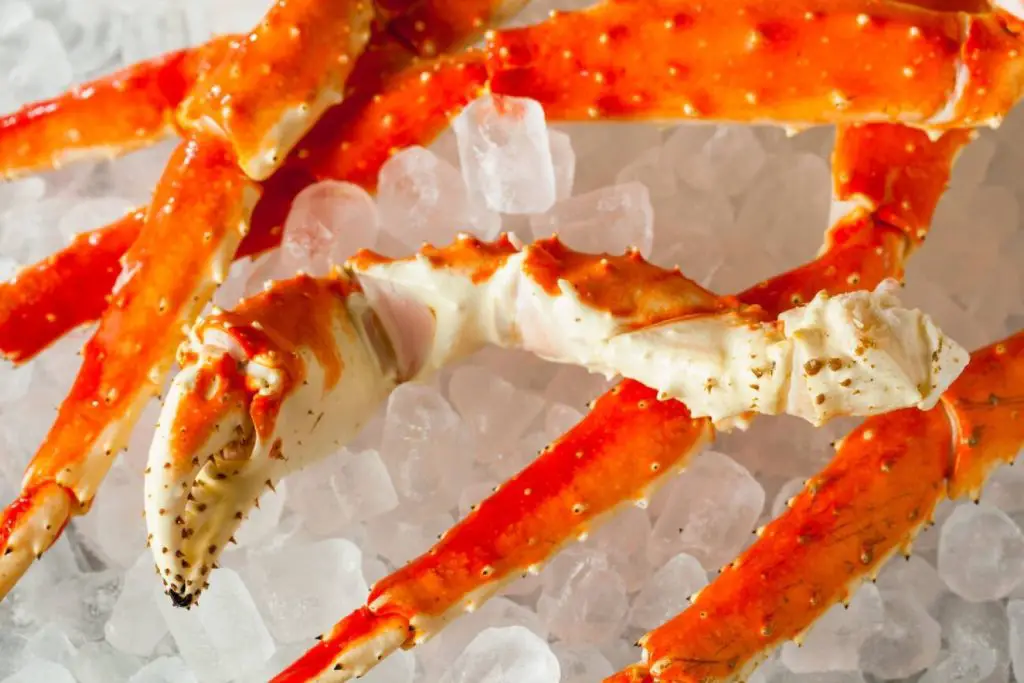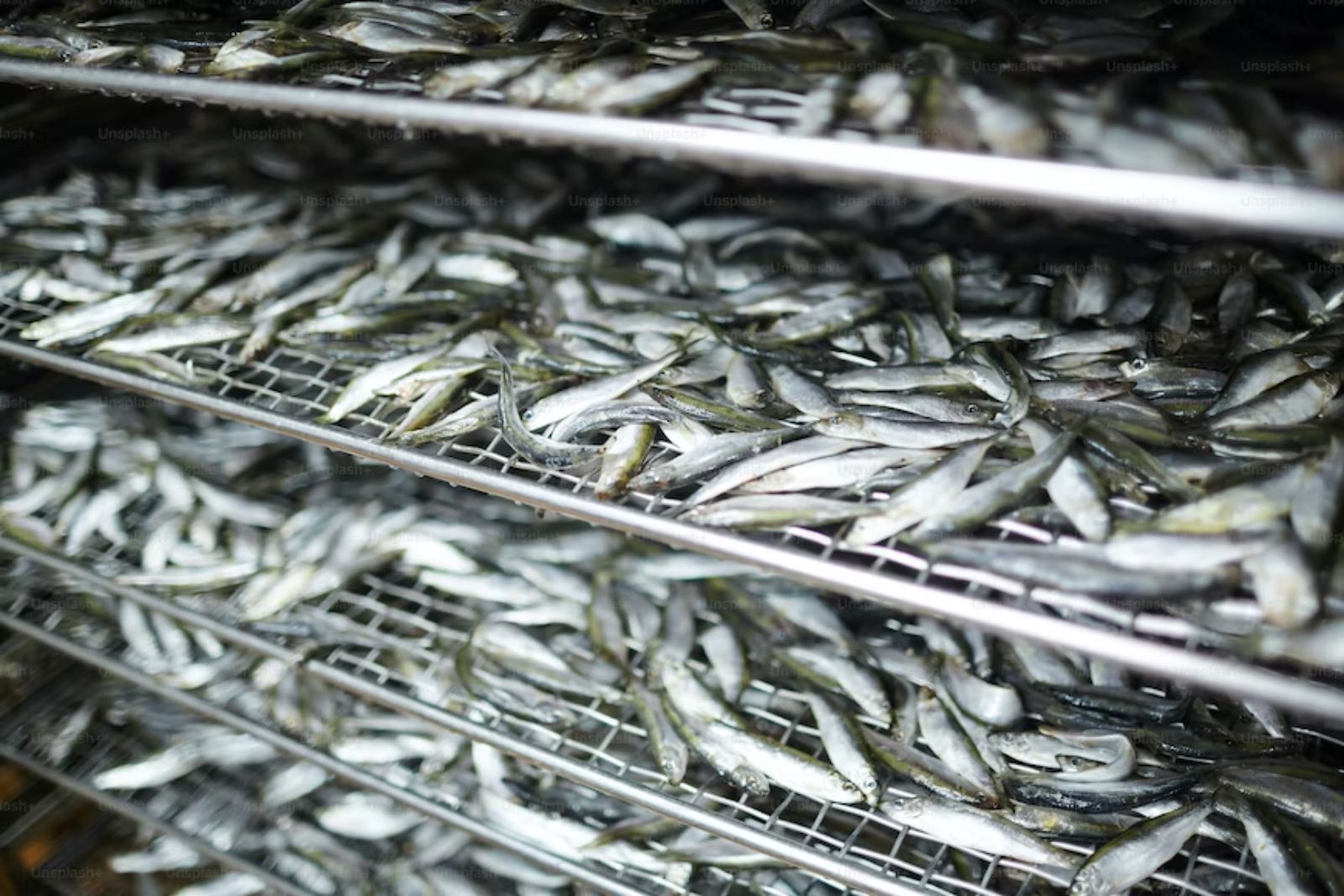
Anchovies are small, oily fish that are widely used in various cuisines for their intense and distinctive flavor. These tiny fish are often packed in salt or oil and can add a savory kick to salads, pasta dishes, and more. Freezing anchovies is a practical way to extend their shelf life and have them on hand for culinary adventures even when they’re not in season. This article presents a step-by-step guide to freezing anchovies while preserving their quality, flavor, and texture.
Here’s a comprehensive guide on how to freeze anchovies:
Step 1: Choose Fresh Anchovies
The journey to freezing anchovies begins with selecting the right ones. When it comes to freezing any type of seafood, including anchovies, starting with the freshest ingredients is crucial. Fresh anchovies not only contribute to the overall taste but also ensure that the frozen result is of the highest quality. Here’s why this step is important:
- Quality Matters: Fresh anchovies offer superior taste and texture compared to their less-than-fresh counterparts. Opting for fish with vibrant, clear eyes and a natural sheen indicates their freshness. These qualities signify that the anchovies were caught relatively recently and have been handled properly.
- Aroma and Appearance: When you inspect potential anchovy candidates, their smell and appearance can speak volumes about their condition. Avoid anchovies that emit strong, fishy odors, as this can be a sign of deterioration. Instead, look for those with a clean oceanic scent, indicative of their recently caught state. Anchovies with a firm and intact structure, free from discoloration or signs of spoilage, are the ones you should aim for.
- Flavor Enhancement: Fresh anchovies provide a distinct flavor profile that is savory, rich, and slightly salty. These characteristics are what make anchovies a sought-after ingredient in various dishes. By choosing fresh anchovies, you’re setting the foundation for your frozen product to deliver the same delightful flavor when you decide to use them.
- Nutritional Value: Anchovies are not only a flavorful addition to dishes but also offer a nutritional boost. They are packed with omega-3 fatty acids, vitamins, and minerals that contribute to a healthy diet. Opting for fresh anchovies ensures that you’ll retain the nutritional benefits even after freezing.
Step 2: Clean and Prepare the Anchovies
Once you’ve secured fresh anchovies, the next crucial step in the freezing process involves proper cleaning and preparation. This meticulous process ensures that the anchovies are ready to be frozen and will maintain their quality during storage. Here’s why cleaning and preparing the anchovies is essential:
- Removal of Undesirable Parts: Anchovies, like many other fish, have certain parts that are less desirable for consumption. By removing the heads, tails, and internal organs, you eliminate potential sources of unwanted flavors and odors that can impact the overall taste of the fish. This step also contributes to a cleaner and more enjoyable culinary experience when you eventually use the frozen anchovies.
- Rinsing for Freshness: Anchovies, especially those packed in salt or oil, can carry residual elements that affect their taste and texture. Rinsing them under cold water helps eliminate any excess salt, dirt, or other contaminants that might be present. This step ensures that the anchovies maintain their natural flavor profile and don’t become overly salty or gritty.
- Preventing Excess Moisture: After rinsing, patting the anchovies dry using paper towels is essential. Excess moisture can lead to ice crystals forming during the freezing process, which can negatively impact the texture of the anchovies. By gently blotting them dry, you reduce the chances of unwanted texture changes, preserving the integrity of the fish.
- Hygiene and Safety: Properly cleaning and preparing the anchovies aligns with hygiene and safety practices in the kitchen. Removing internal organs reduces the risk of ingesting any undesirable components. Furthermore, by handling the anchovies carefully during cleaning, you avoid potential cross-contamination and ensure the frozen product remains safe for consumption.
- Enhancing the Freezing Process: Clean and dry anchovies freeze more effectively. Without excess moisture, the anchovies are less likely to stick together when frozen, which ensures individual pieces can be easily separated when needed. This contributes to a hassle-free cooking experience when you eventually use the frozen anchovies.
Step 3: Arrange the Anchovies for Freezing
With your anchovies cleaned, dried, and prepped, the next crucial step is arranging them for freezing. How you position the anchovies on the baking sheet or tray can significantly impact their individual integrity during freezing. Let’s delve into the importance of this step:
- Preventing Clumping: Anchovies have a tendency to stick together when frozen if they are touching or too close to one another. This can lead to a solid mass of frozen fish that is difficult to separate when you’re ready to use them. By laying the anchovies out evenly on a baking sheet or tray, you create enough space between each fish, preventing them from clumping together.
- Even Freezing: Properly arranging the anchovies ensures that they freeze uniformly. When placed too closely, some anchovies might freeze faster than others, leading to inconsistencies in texture and quality. By giving each anchovy enough space, you promote even freezing, resulting in a batch of anchovies that retain their individual characteristics.
- Ease of Separation: Individual freezing prevents anchovies from freezing together in a solid block. This means you can easily take out the desired quantity without having to thaw the entire batch. The ability to separate them effortlessly saves time and preserves the quality of the remaining frozen anchovies.
- Convenient Storage: Once the anchovies are individually frozen on the baking sheet or tray, transferring them to storage containers becomes much simpler. You can stack them without worrying about them sticking together, making efficient use of freezer space and keeping your kitchen organized.
- Preserving Appearance: Properly arranged anchovies maintain their natural shape and appearance throughout the freezing process. This is particularly important if you plan to use them as a garnish or topping, where aesthetics play a role in the presentation of your dishes.
- Flexibility in Usage: When anchovies are frozen individually and not in a clump, you have the flexibility to use as many or as few as you need for a particular recipe. This prevents wastage and allows you to make the most of your frozen anchovies.
Step 4: Flash-Freeze the Anchovies
Now that your cleaned and arranged anchovies are ready for freezing, it’s time to delve into the process of flash-freezing. This rapid freezing technique is essential for preserving the quality of the anchovies and preventing them from clumping together. Here’s why flash-freezing is a crucial step in the freezing process:
- Preserving Texture and Flavor: Flash-freezing involves rapidly lowering the temperature of the anchovies. This quick freezing process helps preserve the cellular structure of the fish, minimizing the formation of large ice crystals. Large ice crystals can damage the delicate texture of the anchovies, leading to a mushy or compromised texture when thawed. By freezing the anchovies quickly, you ensure that their original texture and flavor are retained.
- Preventing Clumping: Individual freezing during the flash-freezing process is a key strategy for preventing anchovies from sticking together. When anchovies freeze individually, they are less likely to become a solid block of fish. This means you can easily retrieve the desired quantity without thawing the entire batch.
- Time Efficiency: Flash-freezing is a time-efficient method. By freezing the anchovies in a short amount of time, you’re able to preserve their freshness and quality at their peak. Slower freezing methods can lead to moisture loss and deterioration of the fish’s overall quality.
- Maintaining Nutritional Value: Rapid freezing helps lock in the nutritional value of the anchovies. Nutrients such as vitamins and omega-3 fatty acids are better retained when the freezing process is swift, ensuring that the nutritional benefits of the anchovies are maintained for your culinary endeavors.
- Preventing Freezer Burn: Flash-freezing reduces the chances of freezer burn, which occurs when moisture from the fish’s surface evaporates and forms ice crystals. Freezer burn can negatively impact the flavor and texture of the anchovies. By minimizing the time anchovies spend exposed to the freezer air, you reduce the risk of freezer burn.
- Versatile Usage: Flash-frozen anchovies are versatile and can be used in a variety of dishes without compromising their quality. Their intact structure allows them to be used as whole fillets, crumbled, or minced, providing culinary flexibility.
Step 5: Package and Seal
With your anchovies flash-frozen to perfection, it’s time to move on to the packaging and sealing stage. Proper packaging is crucial for maintaining the quality, flavor, and texture of your frozen anchovies. Let’s explore why this step is essential:
- Preserving Freshness: Airtight packaging is your best defense against freezer burn and moisture loss. Freezer burn occurs when the surface of the food comes into contact with air, causing ice crystals to form. By sealing the anchovies in airtight containers or bags, you create a barrier that prevents air from reaching the fish, thus preserving their freshness and taste.
- Preventing Odor Contamination: Anchovies are known for their strong and distinctive flavor. When not properly sealed, their potent aroma can easily permeate other items in your freezer, leading to unwanted flavor transfers. Airtight packaging ensures that the intense aroma of anchovies remains contained, preventing cross-contamination.
- Texture Maintenance: Air exposure can compromise the texture of frozen anchovies. Moisture loss caused by air circulation can lead to freezer burn, which can result in a dry, tough texture. By sealing the anchovies tightly, you help maintain their desirable texture when you eventually use them.
- Efficient Use of Space: Airtight containers or bags allow for efficient utilization of freezer space. Neatly packaged anchovies can be stacked or organized without the risk of leakage or spillage, maximizing the available space in your freezer.
- Flexible Portioning: Properly packaged anchovies can be easily portioned out for your recipes. Whether you need just a few fillets or a larger quantity, sealed packages allow you to take out what you need without thawing more than necessary.
- Long-Term Storage: Airtight packaging extends the shelf life of your frozen anchovies. When sealed properly, they can be stored for several months without significant loss of quality. This means you can enjoy the taste of fresh anchovies even when they’re out of season.
- Preventing Cross-Flavors: If you have various items stored in your freezer, keeping anchovies sealed prevents their flavors from mingling with other foods. This is particularly important given the strong and distinctive taste of anchovies.
Step 6: Label and Date
As you prepare to store your packaged and sealed anchovies in the freezer, taking a moment to label and date the containers or bags is a simple yet crucial step. This labeling practice offers several benefits that contribute to an organized and enjoyable culinary experience. Let’s explore why labeling and dating are important:
- Freshness Tracking: Anchovies, like any frozen food, have a limited shelf life. By labeling the containers or bags with the date of freezing, you establish a clear record of when they were stored. This allows you to keep track of how long the anchovies have been in the freezer and make informed decisions about their freshness.
- Rotation and Usage: Labeling and dating help you implement a “first in, first out” approach to consumption. Knowing which batch of anchovies was frozen earlier enables you to use the older ones before moving on to the newer ones. This practice helps prevent wastage by ensuring that you use your frozen anchovies within their optimal freshness window.
- Quality Control: Over time, frozen foods can degrade in quality. Anchovies that are stored for extended periods may start to lose some of their flavor and texture. By having a clear date of freezing, you can gauge the quality of your frozen anchovies and prioritize using the older ones first to ensure the best culinary experience.
- Meal Planning: Labeled and dated containers allow you to plan your meals more efficiently. You can incorporate the frozen anchovies into your meal plans based on their age, ensuring that your dishes remain flavorful and satisfying.
- Easy Identification: Frozen items can sometimes look similar, especially when stored in airtight containers or bags. Labels make it easy to identify the contents without the need for opening and inspecting each package, saving you time and effort.
- Inventory Management: If you have a variety of frozen ingredients, maintaining a well-organized freezer becomes essential. Labeled and dated containers help you manage your inventory effectively and avoid clutter or confusion.
- Minimizing Waste: By keeping track of the freezing date, you can avoid the disappointment of finding forgotten, freezer-burnt anchovies. This practice allows you to use your frozen items in a timely manner, minimizing the risk of having to discard expired or low-quality food.
Step 7: Store in the Freezer
As you complete the careful process of packaging and labeling your anchovies, the final step is storing them in the freezer. Where you place them and the temperature you maintain play a crucial role in preserving the quality of your frozen anchovies. Here’s why proper storage is essential:
- Temperature Control: The temperature of your freezer significantly impacts the quality and longevity of your frozen items, including anchovies. Storing them at a consistently low temperature—ideally below 0°F (-18°C)—is critical. This temperature range ensures that the anchovies remain in a state of suspended animation, preventing the growth of harmful microorganisms that can compromise taste and safety.
- Texture Preservation: Anchovies are known for their unique texture—tender and slightly oily. Proper storage at subzero temperatures helps maintain this texture by preventing the formation of large ice crystals that can damage the fish’s cellular structure. This means your anchovies will be ready to deliver the same delightful experience when you decide to use them.
- Flavor Integrity: Cold temperatures help preserve the natural flavors of your anchovies. Proper storage prevents oxidation and degradation of the fish’s essential components, keeping their flavor profile intact. This is crucial for ensuring that your dishes maintain the intended taste and appeal.
- Avoiding Temperature Fluctuations: Fluctuations in temperature can negatively impact frozen foods. These fluctuations can cause partial thawing and refreezing, leading to moisture loss, texture changes, and compromised flavor. Placing your labeled anchovies in the coldest part of the freezer minimizes exposure to temperature variations.
- Long-Term Storage: Anchovies frozen and stored at the recommended subzero temperatures can maintain their quality for several months. This long-term storage option allows you to have the taste of fresh anchovies available whenever you need them, regardless of the season.
- Safety Assurance: Storing your anchovies at proper temperatures ensures food safety. Harmful bacteria and pathogens require warmer temperatures to grow and multiply. By keeping your anchovies well below freezing, you’re safeguarding against potential health risks.
- Efficient Use of Space: The coldest part of your freezer is typically the most efficient space for storing frozen items. Organizing your freezer and making use of this prime space allows you to maximize storage and maintain an orderly kitchen.
How long can I store frozen anchovies?
Properly frozen anchovies can be stored for 3-4 months while maintaining their quality. Beyond this period, texture and flavor may diminish. Labeling and dating packages aids in tracking storage time for optimal culinary results.
Step 8: Thaw and Use
After carefully storing your frozen anchovies, the time comes to bring them back to their optimal state for culinary enjoyment. Thawing frozen anchovies correctly is essential to maintain their flavor, texture, and safety. Here’s why following proper thawing procedures is crucial:
- Texture Preservation: Thawing anchovies in the right way helps preserve their delicate texture. Rapid temperature changes, like thawing at room temperature, can cause the fish’s cells to rupture, leading to a loss of moisture and a change in texture. Thawing in the refrigerator allows for a gradual and controlled thawing process, minimizing texture changes.
- Flavor Retention: Anchovies possess a unique and intense flavor that you want to savor in your dishes. Thawing in the refrigerator ensures that the anchovies maintain their full flavor profile, as opposed to rapid thawing methods that can diminish their taste.
- Food Safety: Thawing at room temperature creates an environment conducive to bacterial growth. Bacteria can multiply quickly in the “danger zone” between 40°F (4.4°C) and 140°F (60°C). Thawing in the refrigerator keeps the anchovies at a temperature outside this danger zone, reducing the risk of foodborne illness.
- Even Thawing: Thawing in the refrigerator promotes even thawing throughout the anchovies. This gradual process ensures that no part of the fish remains frozen while other parts thaw, which can result in inconsistencies in taste and texture.
- Minimized Drip Loss: Thawing in the refrigerator minimizes the loss of natural juices from the anchovies. This is important for retaining their moisture and taste, especially when used as a flavorful ingredient in various dishes.
- Flexible Usage: Thawing in the refrigerator allows you to thaw only the amount you need while keeping the rest of the batch frozen. This is especially useful when recipes call for a specific quantity of anchovies, as you won’t have to thaw more than necessary.
- Time Consideration: While thawing in the refrigerator takes longer than other methods, it requires minimal effort and planning. Simply take the desired quantity of anchovies out of the freezer and place them in the refrigerator a day before you plan to use them. This longer thawing time is well worth the preservation of quality and safety.
Other related questions
Can I refreeze anchovies?
It’s generally not recommended to refreeze anchovies once they’ve been thawed. Repeated freezing and thawing can affect their texture and flavor. It’s best to use the thawed anchovies promptly to maintain their quality.
How do I know if the anchovies have gone bad after being frozen?
Signs of frozen anchovies going bad include off-putting odors, discoloration, or a slimy texture. If they look or smell unpleasant, discard them. Proper freezing and storage maximize their shelf life.
Can I freeze anchovies directly in their original packaging?
It’s advisable to transfer anchovies to airtight containers or resealable bags before freezing. This helps maintain their quality and prevents freezer burn.
Can I freeze marinated anchovies or those in oil?
While freezing marinated or oil-packed anchovies is possible, it can alter their texture and taste. It’s recommended to freeze fresh anchovies and add marinades or oils after thawing for best results.
What dishes can I use frozen anchovies in?
Frozen anchovies are versatile additions to various dishes. They enhance pasta sauces, bringing a savory umami flavor. They work well as pizza toppings, add depth to salads, and enrich dressings and marinades.


